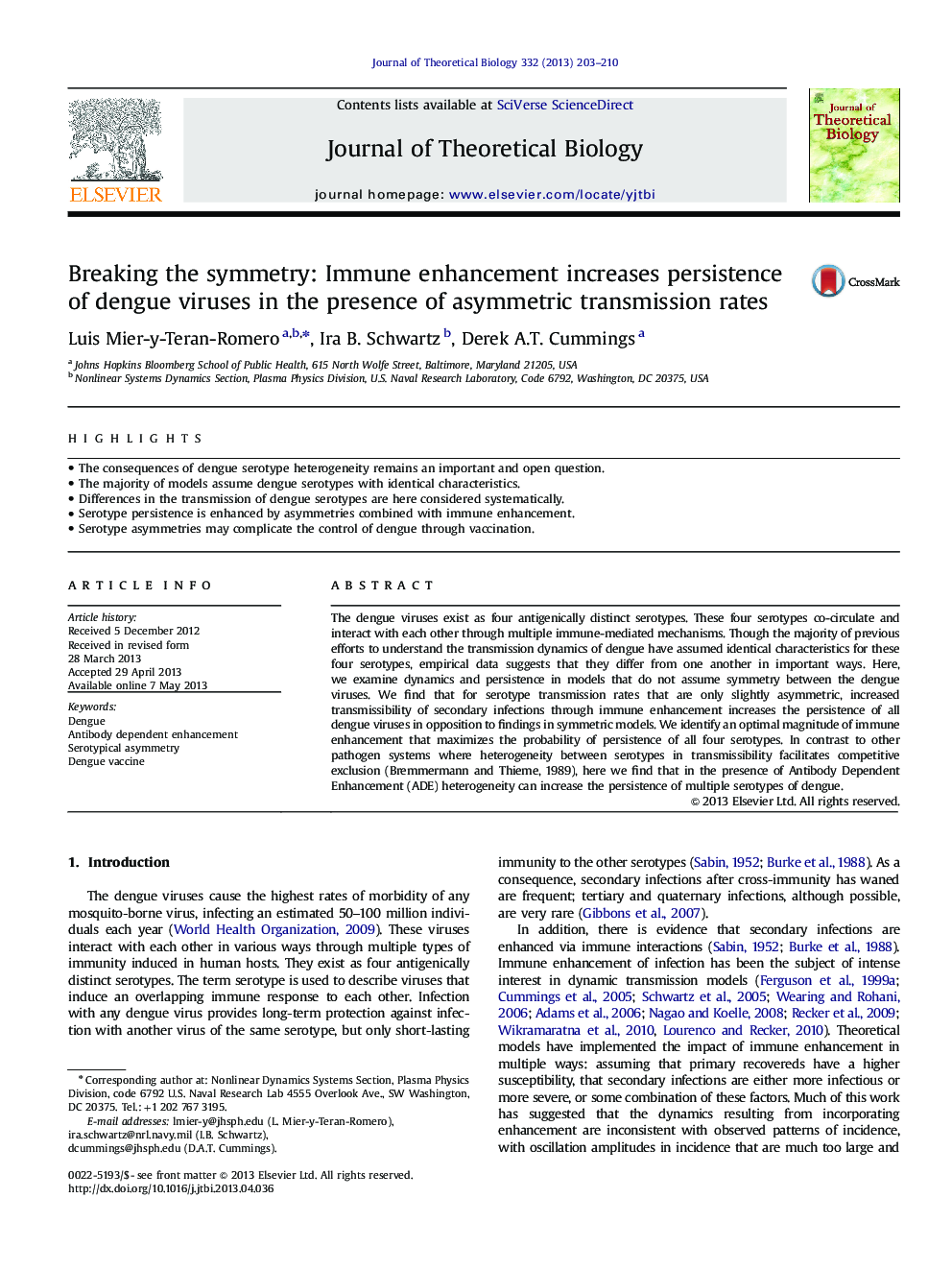| Article ID | Journal | Published Year | Pages | File Type |
|---|---|---|---|---|
| 4496349 | Journal of Theoretical Biology | 2013 | 8 Pages |
•The consequences of dengue serotype heterogeneity remains an important and open question.•The majority of models assume dengue serotypes with identical characteristics.•Differences in the transmission of dengue serotypes are here considered systematically.•Serotype persistence is enhanced by asymmetries combined with immune enhancement.•Serotype asymmetries may complicate the control of dengue through vaccination.
The dengue viruses exist as four antigenically distinct serotypes. These four serotypes co-circulate and interact with each other through multiple immune-mediated mechanisms. Though the majority of previous efforts to understand the transmission dynamics of dengue have assumed identical characteristics for these four serotypes, empirical data suggests that they differ from one another in important ways. Here, we examine dynamics and persistence in models that do not assume symmetry between the dengue viruses. We find that for serotype transmission rates that are only slightly asymmetric, increased transmissibility of secondary infections through immune enhancement increases the persistence of all dengue viruses in opposition to findings in symmetric models. We identify an optimal magnitude of immune enhancement that maximizes the probability of persistence of all four serotypes. In contrast to other pathogen systems where heterogeneity between serotypes in transmissibility facilitates competitive exclusion (Bremmermann and Thieme, 1989), here we find that in the presence of Antibody Dependent Enhancement (ADE) heterogeneity can increase the persistence of multiple serotypes of dengue.
